Bee balm care and growing guide: top tips for Monarda
Be successful when growing bee balm by following our expert planting and care advice for this hardy perennial

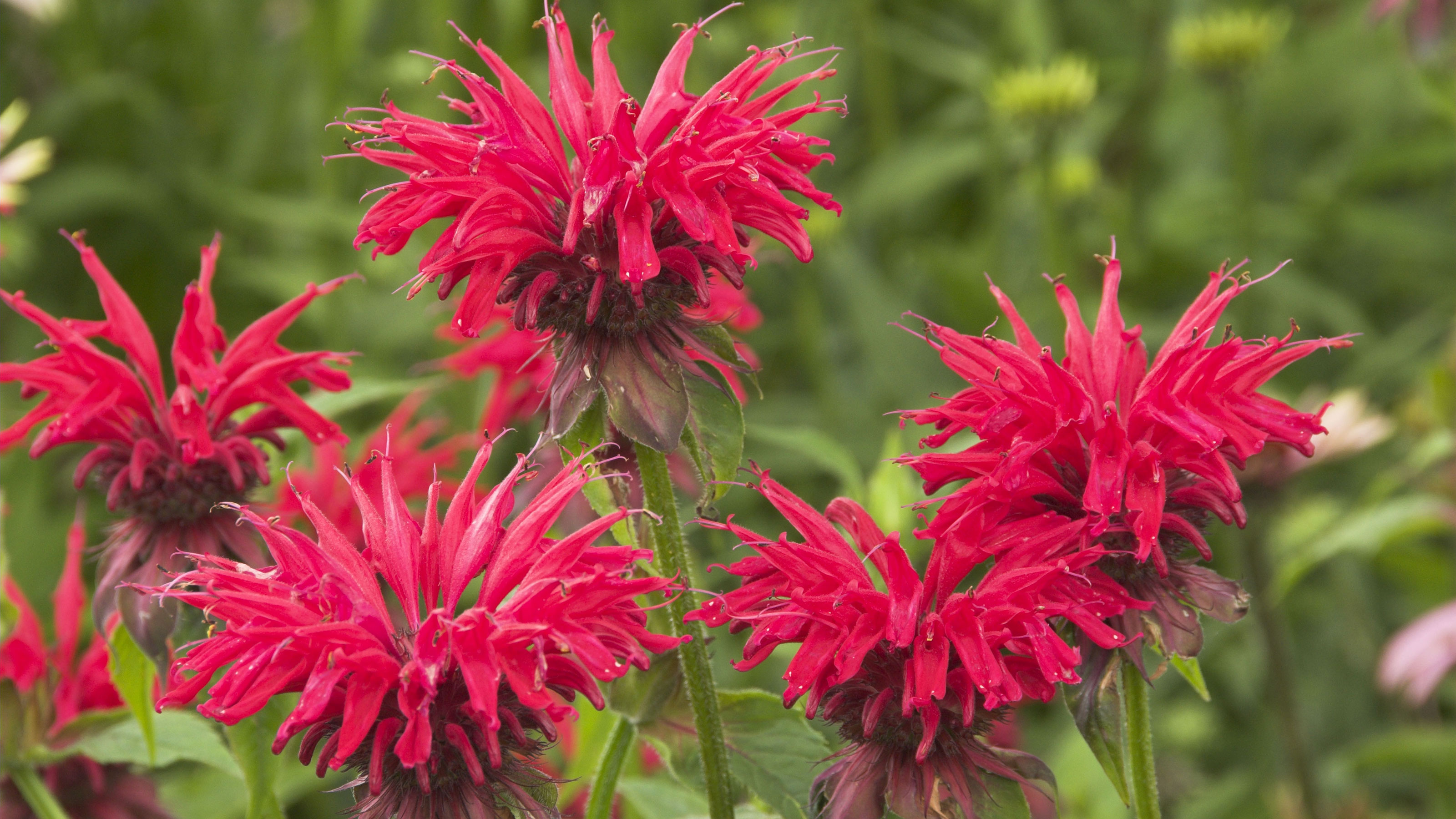
Bee balm, which is also known as Monarda and bergamot, is a hardy perennial plant in the mint family. It quickly develops a spreading, shallow-rooted crown sending out runners that make new roots as they go.
In spring, square-stemmed, vertical shoots develop and carry opposite pairs of toothed, oval leaves topped in summer by clusters of hooded flowers gathered round a central disk. The leaves immediately under the flower are sometimes tinted purple.
The foliage is highly aromatic and, when crushed, has the same smell as the bergamot orange used to flavor Earl Grey tea.
Bee balm is one of the best plants for pollinators and its flowers are fragrant and very popular with hummingbirds, bees and butterflies as they provide a good source of pollen and nectar.

What are the main types of bee balm?
Bee-friendly wildflower meadows are this year's biggest garden trend and bee balms are perfect additions to native garden and wild flower planting schemes. There are also bee balms that are suitable for more formal flower gardens and cottage garden ideas.
Native bee balms
For native plant gardens, choose one of the wild native bee balms. There are about 15 different native bee balms growing in different parts of the US or in different conditions.
- Oswego tea: So called because it was first found by settlers in Oswego, New York state, and also known as bergamot or simply bee balm, grows from New England south to Georgia and Tennessee. It has bright scarlet flowers, enjoys moisture and a little shade and is often listed by its scientific name, Monarda didyma. It reaches about 3ft (90cm) and is hardy to zone 4.
- Wild bee balm: Also known as wild bergamot, grows from Quebec in the north to Texas and Arizona, will grow in drier conditions and has lavender flowers. Its scientific name is Monarda fistulosa. It reaches about 4ft (90cm) and is hardy to zone 3.
- Lemon bee balm: The leaves have a lemony flavor, and clusters of pink or white flowers often in two clusters one above the other. Its scientific name is Monarda citriodora. It reaches about 2ft (90cm) and is hardy to zone 5.
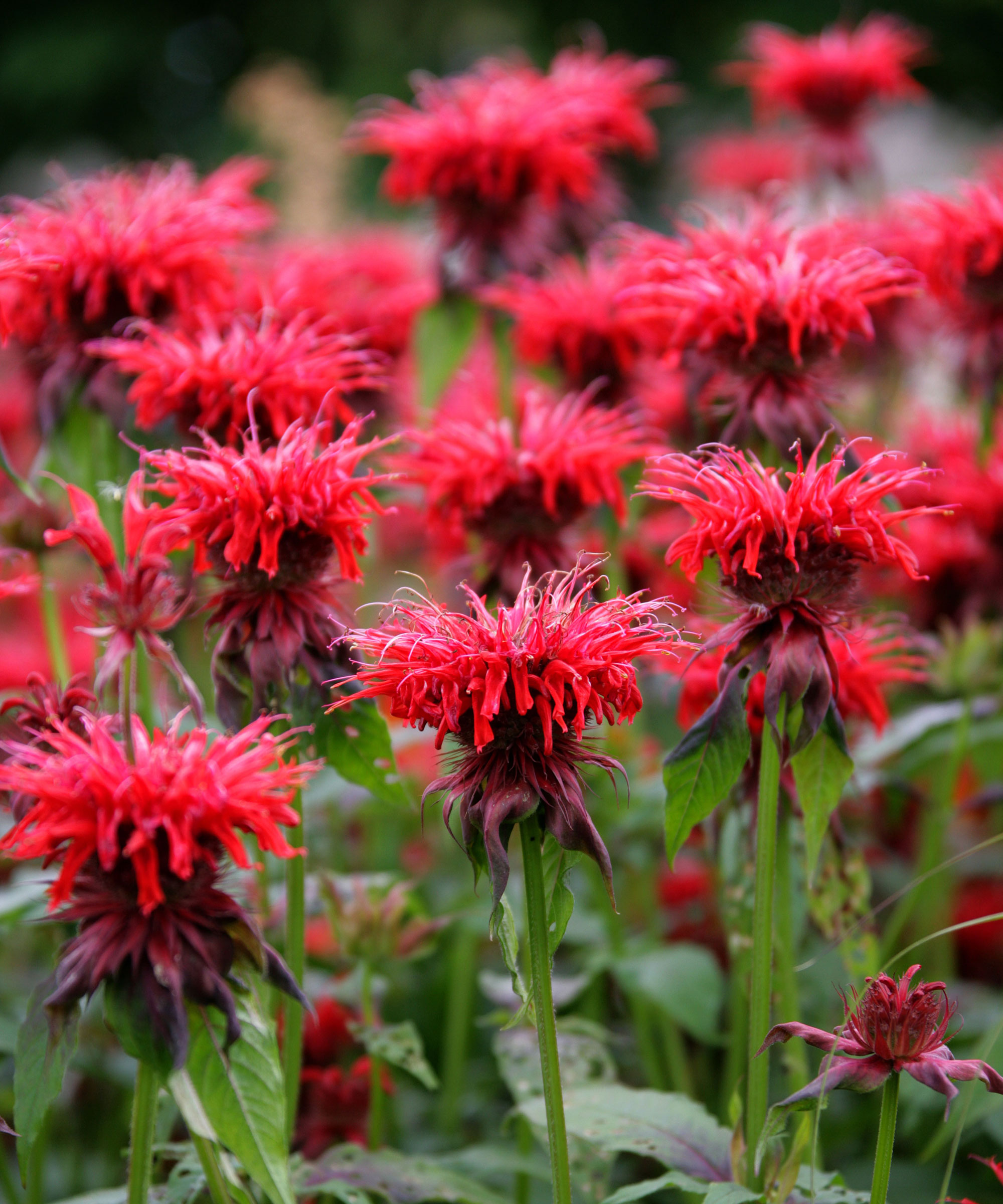
Garden bee balms
Garden bee balms often bring together the different features of the various native bee balms. They come in a wide range of shades, so you can easily find one to suit your chosen garden color scheme.
- ‘Claire Grace’ is lavender. Reaches 3ft (90cm), USDA Z3.
- ‘Gardenview Scarlet’ is scarlet. Reaches 3ft (90cm), USDA Z4.
- ‘Jacob Cline’ is deep red. Reaches 3ft (90cm), USDA Z4.
- ‘Raspberry Wine’ has rich red flowers. Reaches 32in (80cm), USDA Z4.
- ‘Scorpion’ is purple. Reaches 4ft (1.2m), USDA Z4.
- ‘Snow White’ is, as you might expect, white. Reaches 36in (90cm), USDA Z4.

Many of the latest varieties are much more dwarf, shorter in growth, than older varieties, are suitable for growing in garden planters and are one of the best plants for small gardens and yards. They also tend to be resistant to mildew.
- Bee-You Series Three colors, reaches 15-18in (38-45cm), USDA Z5.
- Leading Lady Series Four colors, reaches 10-14in (25-38cm), USDA Z4.
- Pardon Me Series Five colors, reaches 14-18in (38-45cm), USDA Z4.
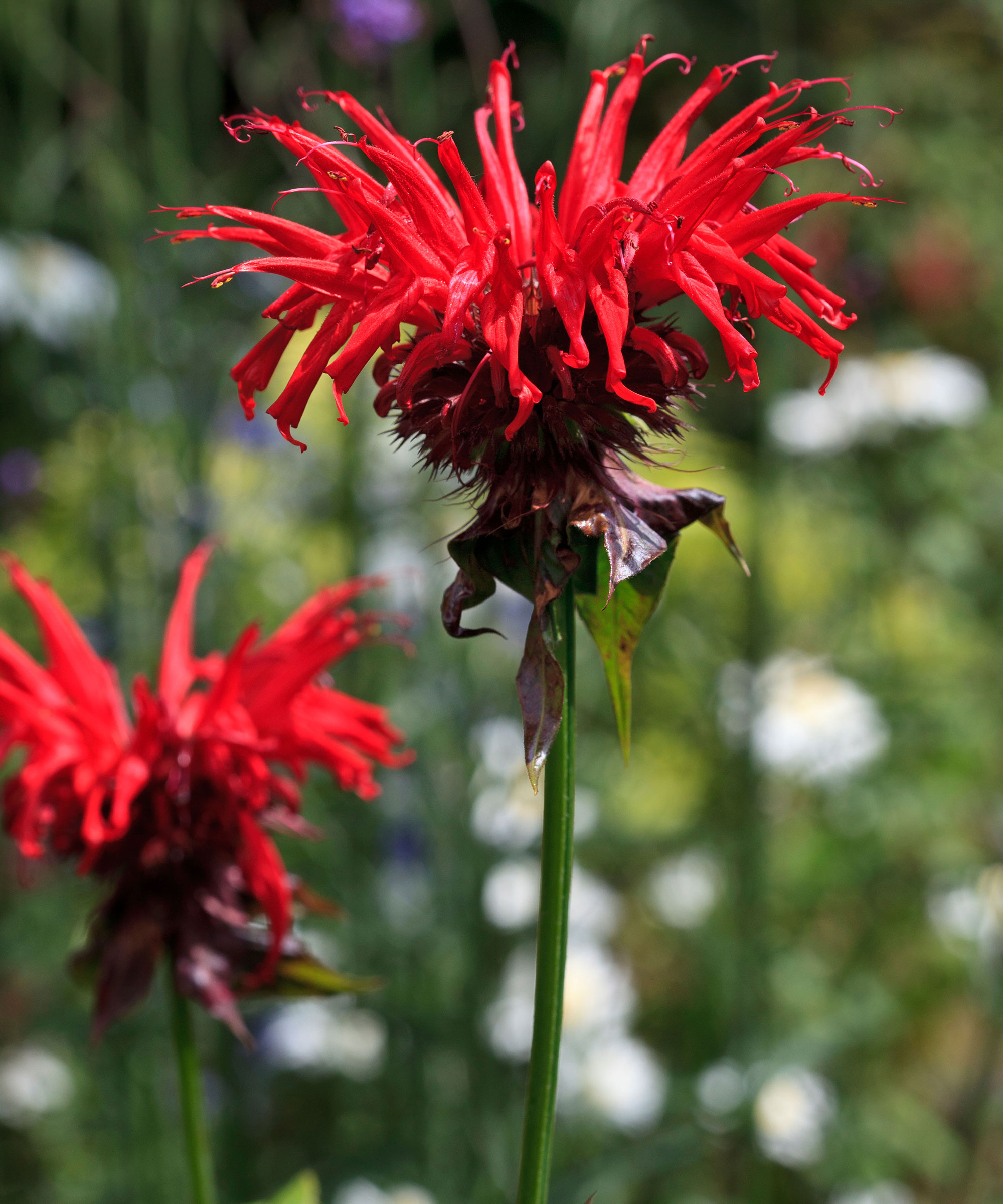
When and where to plant bee balm
Plant bee balm in spring, as the plants are starting to grow, or in summer when they are flowering.
You may find, if you buy your new plants in spring, that the pots are full of emerging shoots. In that case, try removing the plant from its pot and pulling it into two or three pieces to plant individually in a group. The plants quickly fill their pots so you may find yourself with a few free plants.
After planting in summer, keeping the plants moist is especially important as they hate drought soon after planting. Follow our water saving tips to avoid water waste while making sure your plants stay hydrated.
Bee balms appreciate soil that does not dry out for long periods. In American states with hot summers, and in UK gardens with light soil that dries out quickly, plant bee balms in sites that are partially shaded. In areas with cool summers they are happy out in full sun.

Bee balm care
- Ensure that the plants do not dry out for long periods at any time of year. Support taller varieties with canes and twine, or with steel or plastic plant supports.
- Deadheading flowers on bee balms once the flowers have faded is advised as this may encourage a second flush of blooms, then cut the plants down to the ground at the end of the season.
- Bee balms need lifting, splitting, dividing and replanting more often than other perennials because the plants spread quickly and, also, crowded growth creates ideal conditions for mildew infection. So, every two or three years, as part of your spring garden jobs, split the plants as they start into growth in spring.

How to make more bee balm plants
Bee balm is easy to propagate by digging up a plant in spring, shaking off the soil and pulling it apart to give you a number of small pieces. Each should have at least a few leaves with some roots attached.
These small pieces can be planted in pots to grow on before planting in your flower beds, alternatively, larger pieces can be planted straight away.
If you're interested in growing flowers from seeds, bee balms can also be sown in pots or cell packs in spring, but the varieties available as seeds will not usually be of the same quality as named varieties available as plants.
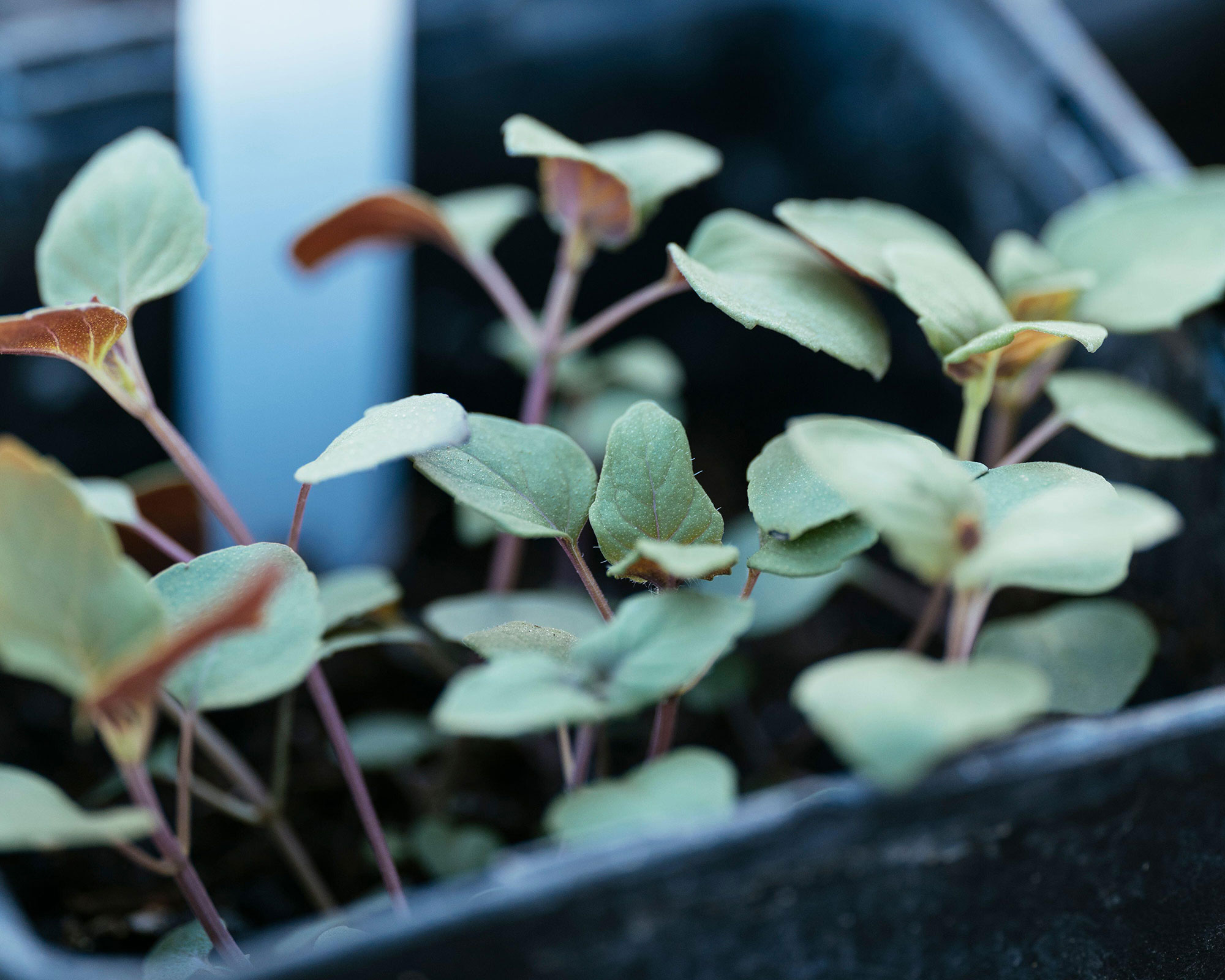
Bee balm problems and how to solve them
The main problem that affects bee balm is mildew, a white fungal growth on the leaves which disfigures the plants and causes the foliage to drop off.
Mildew is most often a problem in dry summers, so keeping the roots damp helps prevent infection. Rich, fertile soil types that encourage vigorous growth are also helpful as mildew is less likely to attack plants that are growing well. Regular lifting, dividing and replanting is also helpful so the growth is never allowed to become too crowded.
Some varieties are flagged as resistant to mildew, but most resistant varieties are still likely to be infected to a limited extent and after a few years the mildew may overcome the resistance.
Rust is another disease that infects bee balm. Rust shows as rust-colored spots usually on the undersides of the leaves. Rust is more difficult to prevent but picking off infected leaves at the first sign is usually helpful. Clear away all the old growth at the end of the season, and rather than composting it, burn it or use a garden waste collection service.

How to grow bee balm in containers
Bee balm are worth considering for your container gardening ideas. In recent years dwarf varieties have been developed specially to grow in planters, and at the front of the flower garden.
These varieties come in series – all the plants in a series will look pretty much the same in terms of height and growth – but have flowers in different colors.
For containers look out for the Bee-You Series (three colors), the Leading Lady Series (four colors) and the Pardon Me Series (five colors).
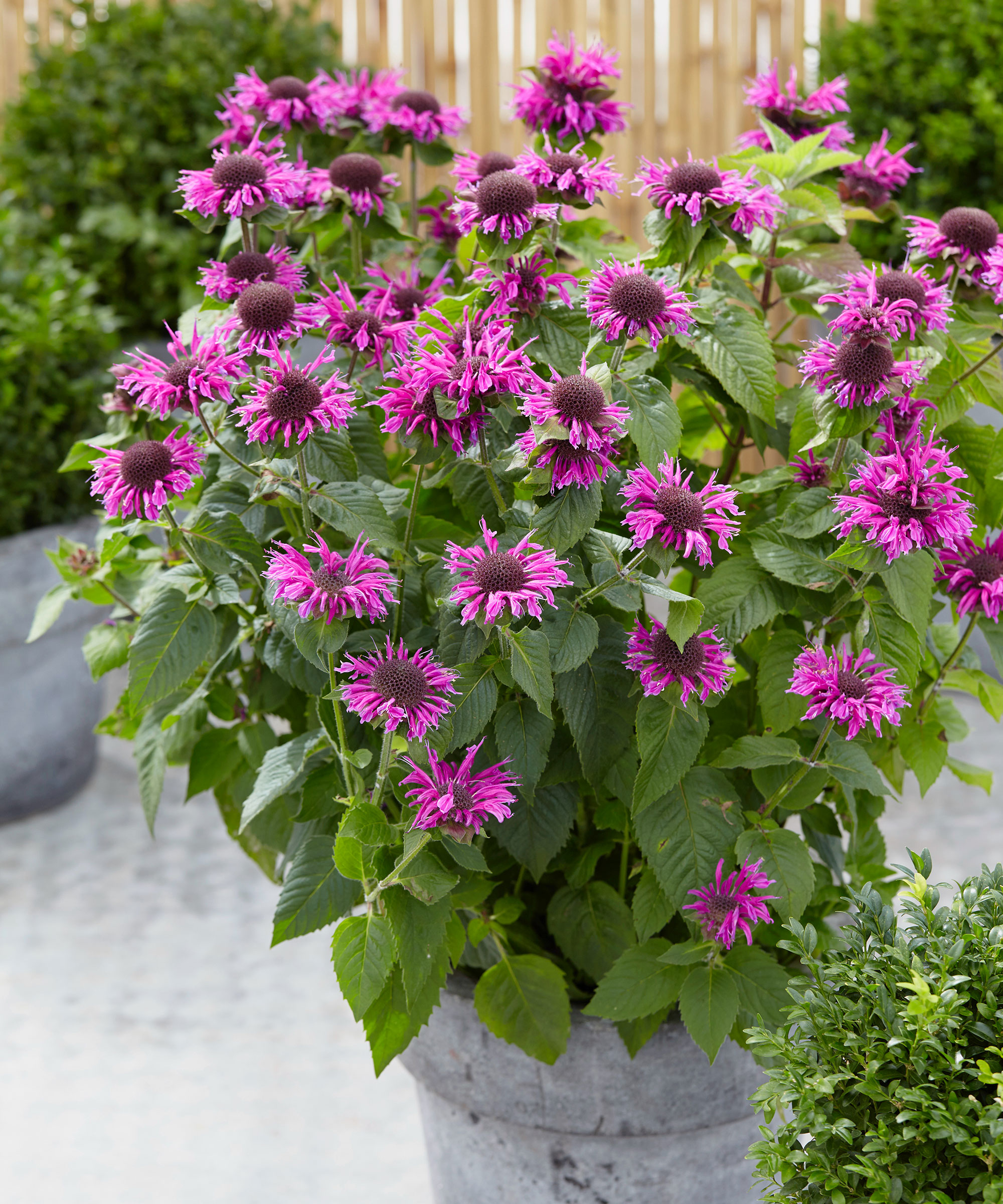
How did bee balm get its name?
Native Americans used the leaves of the plant as a treatment to reduce the swelling resulting from a bee sting. Settlers learned this from native peoples and referred to it as a balm, a fragrant treatment to soothe the skin.
It is also called bergamot, because its fragrance is similar to that of the bergamot orange, which is used to flavor Earl Grey tea.
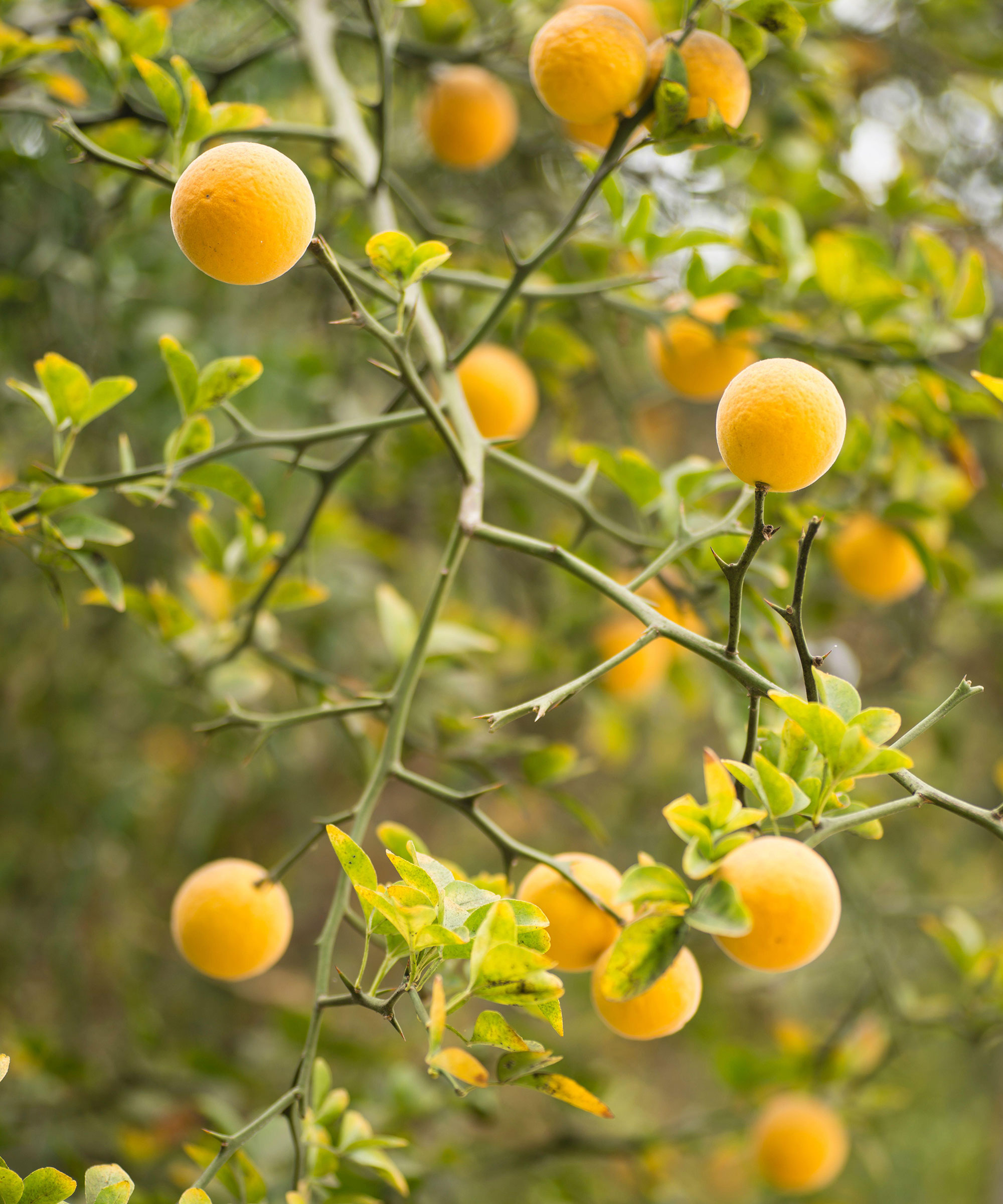
In which USDA zones will bee balm grow?
Native wild bee balm, Monarda fistulosa (pale lavender), is one of hardiest perennials and grows well in zone 3, while red bee balm, Monarda didyma (scarlet) will grow in zone 4 so is also hardier than most perennials.
Lemon bee balm, Monarda citriodora (which has pink flowers) is a zone 5 plant. Most of the named garden varieties of bee balm are hardy down to zone 4.
Remember that if you grow bee balm in a container as part of your patio gardening ideas, you are in effect growing it in one zone colder than if it was planted in the ground.

Is bee balm deer-resistant?
Yes, bee balm is a deer-resistant plant. Deer prefer to eat foliage, flowers and stems that have little or no taste. However, all wild and garden bee balms have strongly aromatic foliage so deer will not eat them unless they are very very hungry – and this is rarely the case in summer when there are plenty of other more palatable plants for them to eat.
Some gardeners have tried using bee balm as a barrier to protect deer favorites, relying on the smell of bee balm to encourage deer to move away and browse elsewhere.
This can work for a limited period, but sooner or later the deer’s curiosity will ensure that they find the plants you are trying to protect.
Is bee balm invasive?
All wild and garden bee balms grow strongly, especially when planted in good soil. But, because they are native plants, they are not usually described as invasive plants.
However, as they spread outwards the center of the clump tends to die out which is why I recommend digging up the plants, splitting them and replanting them every two or three years.
Some gardeners split and replant their bee balms every year. This way you can prevent them smothering other plants nearby.
The exceptions are the modern dwarf varieties that, as well as being shorter in height, spread less vigorously.
Where to buy bee balm
Native bee balms are offered as seeds and this is a very economical way to buy them. Sow seeds in spring, the plants will usually flower in their second year. The flower color of garden bee balms grown from seeds cannot usually be guaranteed.
Bee balms are often offered in pints or other small formats by mail order suppliers and this is the best way to buy garden bee balms. Plant them in clumps of three or five for a quick effect.
Large plants are offered by retail nurseries and garden centers. In flower, these will give impact but because bee balms grow so quickly the best approach with large plants is to buy them in spring, pull the plants into a number of smaller pieces straight away and to plant them individually.
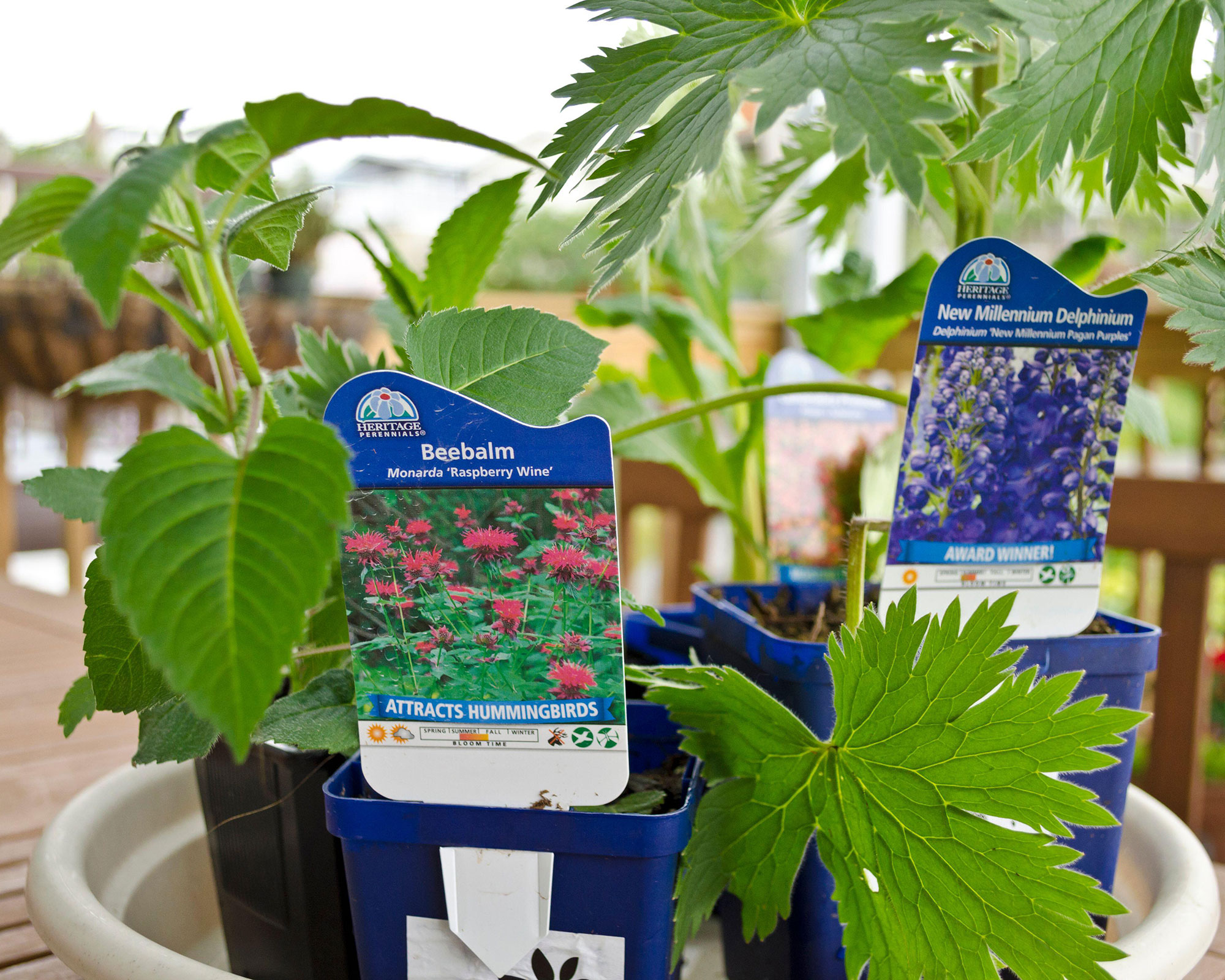
Where to buy bee balm in the US:
- Shop bee balm plants at Amazon
- Shop bee balm plants at American Meadows
- Shop bee balm plants at Burpee
- Shop bee balm plants at Lowe's
- Shop bee balm plants at Monrovia
- Shop bee balm plants at Proven Winners
Where to by bee balm plants in the UK:

Graham Rice is a garden writer who has won awards for his work online, and in books and magazines, on both sides of the Atlantic. He is a member of a number of Royal Horticultural Society committees and the recipient of the 2021 Garden Media Guild Lifetime Achievement Award.
